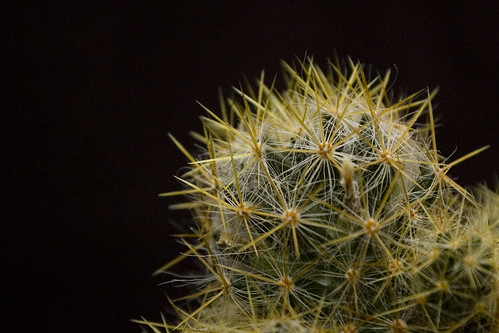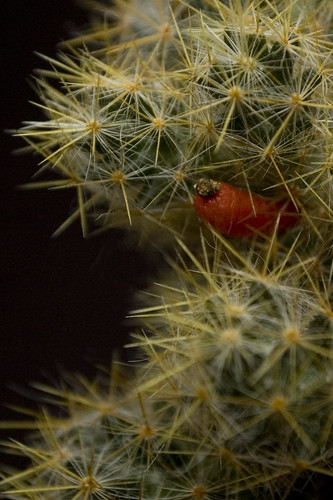You can find this post here on my new site for the full post and to leave comments.
I am cactus blind. This stems from having next to no contact with these plants for basically my whole life. Never really had any as houseplants and I've only seen one single species of Opuntia that is hardy here (which is trying hard to take over both my garden and my patio - I think I'll be moving it next year). Somewhere I have pictures of it, they will have to wait for another post though because not only do I not know where to find these pictures, but also because this post is for someone else.

I don't know what this is. This is almost a top view of the plant. It's pretty hard to make out some of the more detailed structures of the plant from this angle. The bit going up here is the main stem plus branches, towards the bottom you can see a number of other stems which are not attached to the main trunk.
I got this plant by accident. I was looking for soil. And maybe some little pots. I ended up with a Haworthia, two Nepenthes (free) and a cactus (free), none of which I know a whole lot about, all while trying to deal with some seeds and basically just a busy time to be trying to look into care and IDs for everything all at once. I did know that most cacti need to be dry during winter. So I put it in bright light and haven't touched it since.
I've started to look into what this might be and think that maybe it is a Mammillaria... Looking closely at it reveals that it is actually a taller stalk with longer and thinner branches than I have remembered. The branches are thin but come to a broader rounded tip. The trunk is more even, increasing in size only slightly from the base of the stem to the tip, though it is hard to see because of how dense the branches are. There are several shoots coming from the soil, some of which have begun to branch at a fairly small size. The longest trunk is around 4 inches long. None of the plants/shoots are growing in a strongly vertical habit, though they are upright.

Here's a closeup of the the spines. You can click the picture for a much bigger version.
The central spines are a yellow colour when young becoming slightly more orange with age though the effect is not dramatic. The needles are straight and have no hooks or curves to them at all. They are up to/around 5mm long held on slightly longer, thin areoles. Many thinner radial spines surround the yellow ones, these are generally straight as well.

A developing (ripening I guess) fruit on the plant.
I had not noticed until just last night but this plant has a developing fruit on it! I was about to toss Mammillaria as an option entirely until as I was closing my various Mammillaria tabs I had opened something in passing on the Wikipedia article something about the fruit of most plants in this genus being berry-like. Well hello there... I see a resemblance. I can't say this narrows it down overly much (for me anyway), but it certainly suggests that Mammillaria has not been ruled out yet, and that other genera of cacti have been.
I'm currently going through Cactus Guide but have not yet seen anything that resembles my plant. Have you?


It's beautiful! Not sure what it is though :(
ReplyDeleteThanks.
ReplyDeleteI wasn't a huge fan (at first) but it's been growing on me.
If this is in fact a Mammillaria prolifera it's a nice clumping/mounding cactus which is fairly easy to grow inside cooler and drier in the winter and outside sunny with some water during the summer. Fairly reliable bloomer and interesting in that it will hold onto the fruit long enough that there will still be red fruit as the next years flowers open.
I think I much prefer solitary (maybe clumping with around 3 plants or so) barrel types or taller cylindrical cacti, preferably with somewhat prominent central spines and few if any radial spines to give it a very clean look.
Considering how little I think about cacti I seem to have some strong preferences with them!
Opuntia bigelovii aka Cylindopuntia bigelovii. It's a Cholla cactus
ReplyDelete